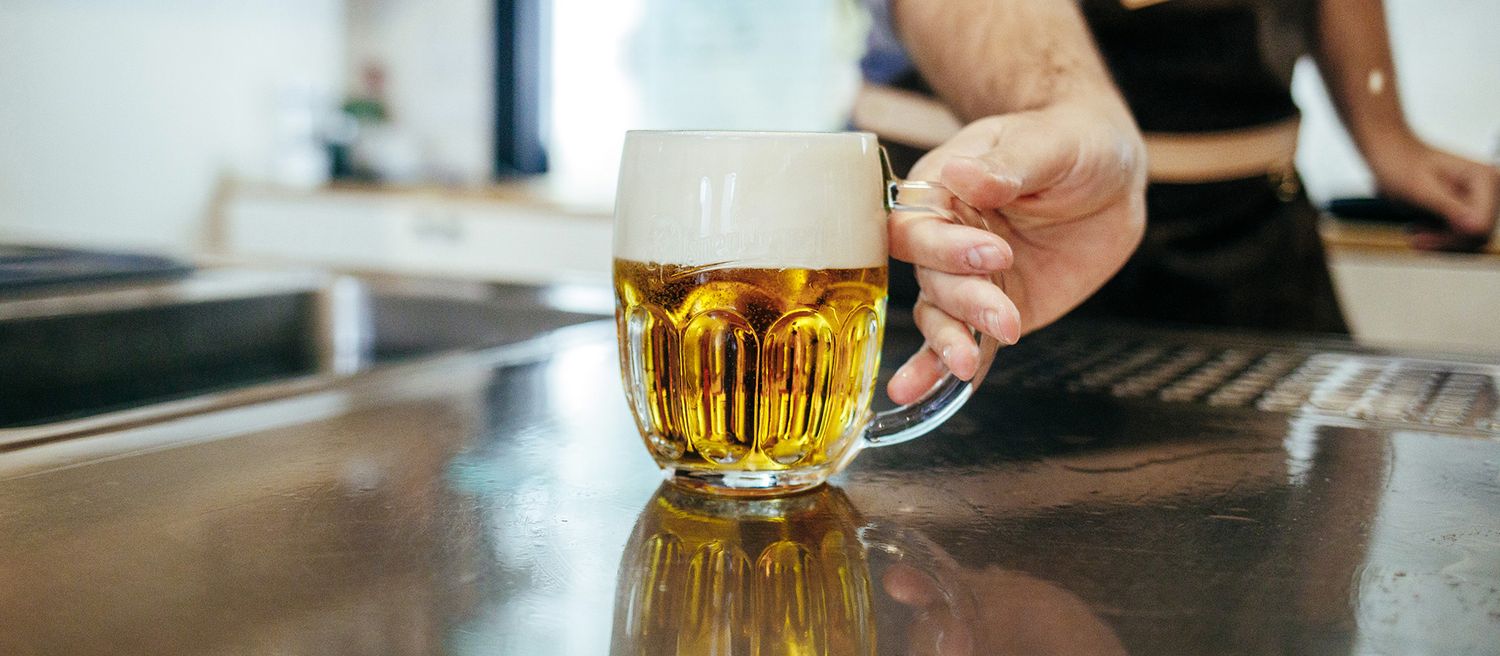
When most people order a beer they’re more concerned with the liquid than the glass it comes in. But you might be surprised to learn how much history and design have gone into Pilsner glasses.
Before the 19th century, containers for drinks were made of wood, stone, or pewter. These opaque materials didn’t allow drinkers to see the liquid inside. That was probably a good thing, because at the time, most beer was dark and sludgy. The Industrial Revolution drastically lowered the cost of glass production, making clear glasses available to the masses.
Suddenly glassmakers had a lot to think about. Tavern owners wanted durable glasses they could stack easily. Drinkers had their own requests. For example, early German beer steins had lids of metal or clay that kept insects from flying into the beer. But glass was favoured because it was cheap and light, not because it was translucent.
The birth of Pilsner Urquell changed everything. Suddenly beer was worth looking at. The unique colour and aroma of the beer called for a glass that would heighten the drinking experience. The Pilsner glass was born. Every element was designed with a purpose.
The long slender taper of the classic Pilsner glass maximises the amount of light that shines through the beer, showing off its golden clarity. The stem of the glass gives the drinker a place to put his or her hand without warming up the beer. The shape of the glass also concentrates the aroma at the top, much like a wine glass, making drinking Pilsner a multi-sensory experience.
The most famous Pilsner glass in history was the special Moser crystal chalice that brewery workers made for Emperor Franz Josef I upon his visit to the brewery in 1874. The emperor was a fan of our beer, and once said: “It is rather odd that no brewery has been able to duplicate the singular and delicious taste of Pilsner beer”. You can see the chalice at the brewery today, and you can purchase a replica in the gift shop, where you’ll also see several different versions of the classic Pilsner glass.
Occasionally you’ll still be served in a classic Pilsner glass, especially if you come to the Czech Republic, but today our tank pubs use more utilitarian mugs with sturdy handles. The stout, round shape and the angular cuts at the bottom of the mug show off the beer’s colour. If you look closely you’ll see the measure line etched in well below the rim. That’s because the glass has been made larger to account for a thick head of creamy wet foam.
So the next time you’re enjoying a Pilsner, take a moment to admire the glass it comes in. But don’t take too long, because your beer is waiting!
